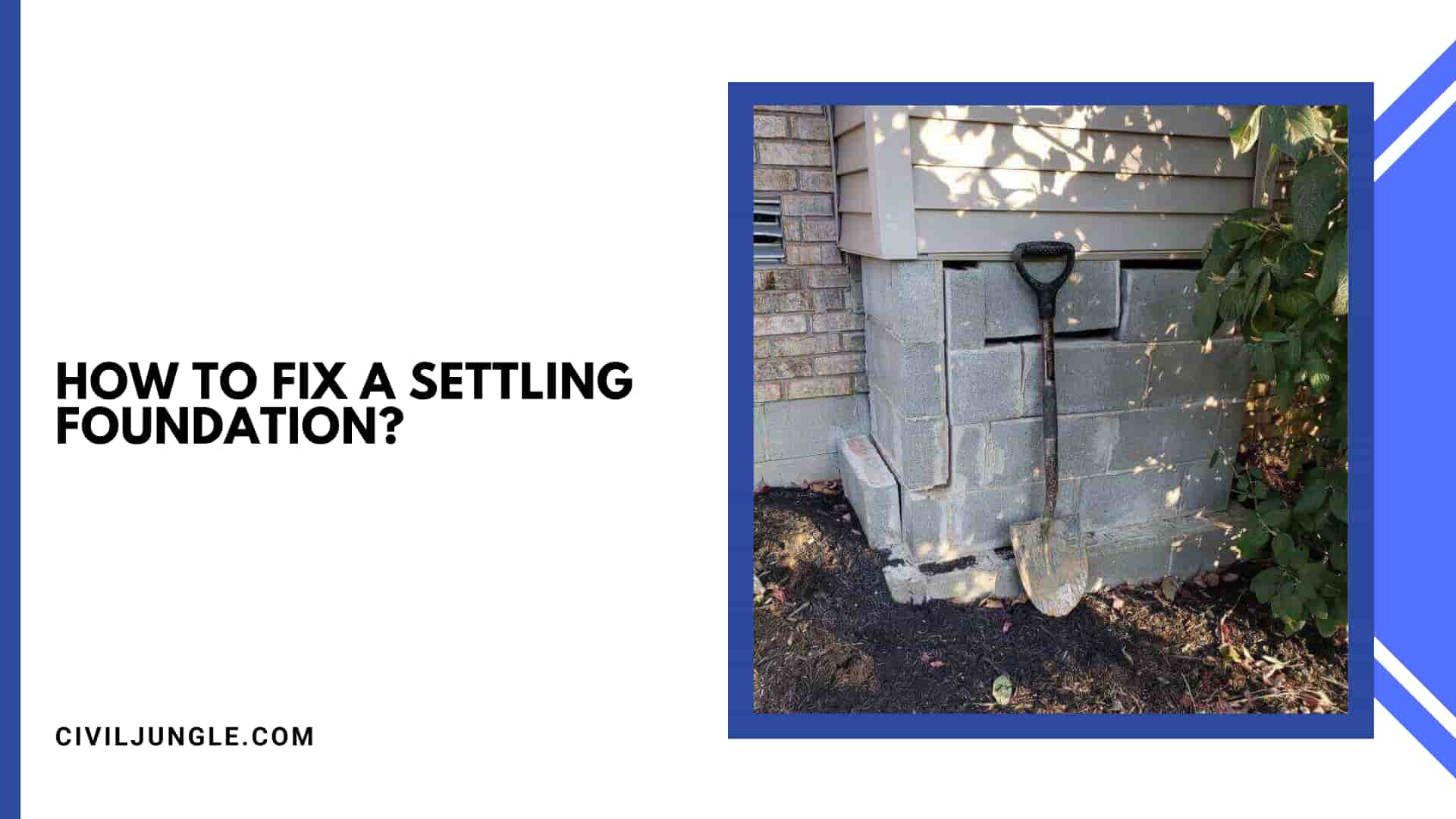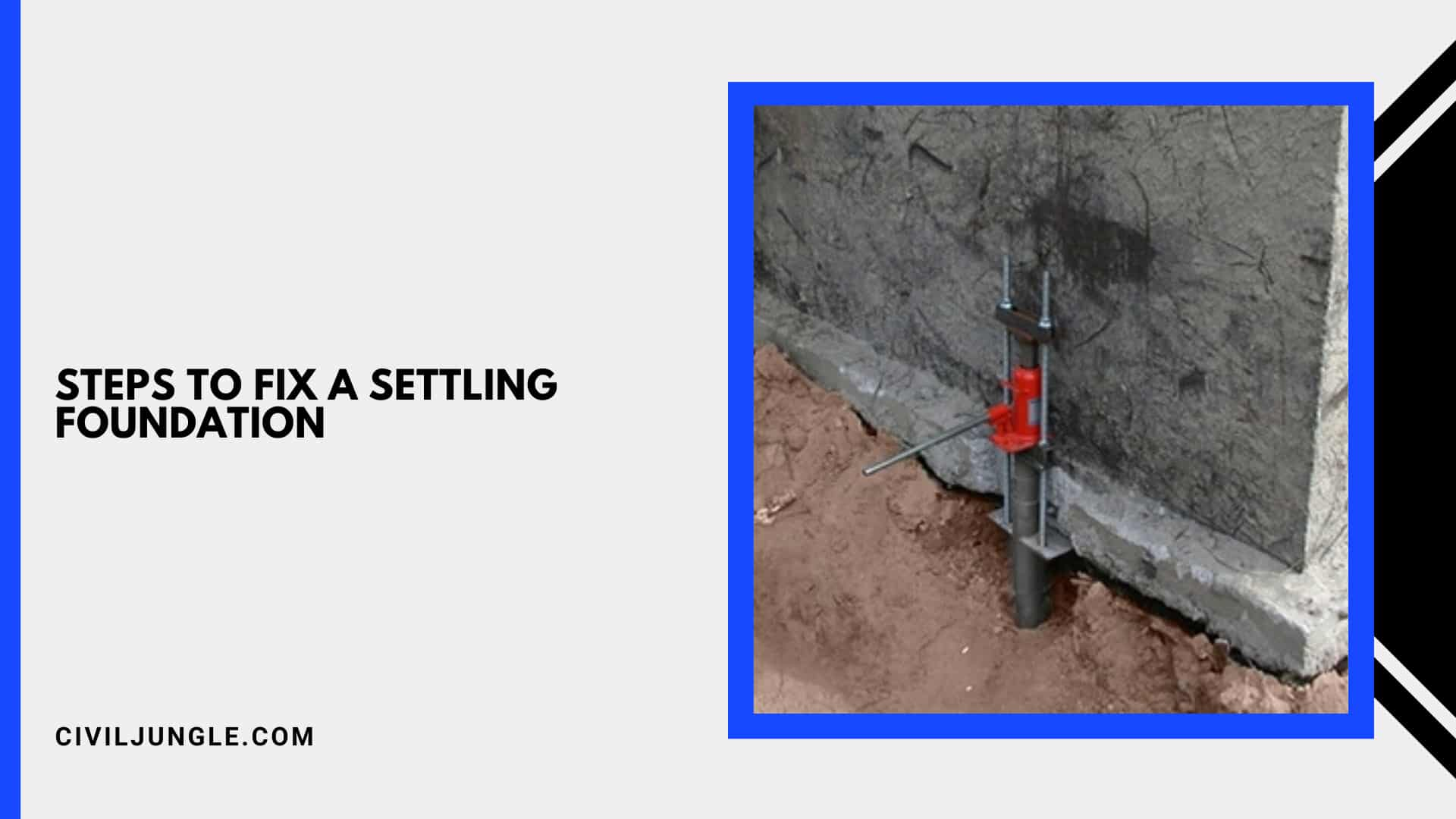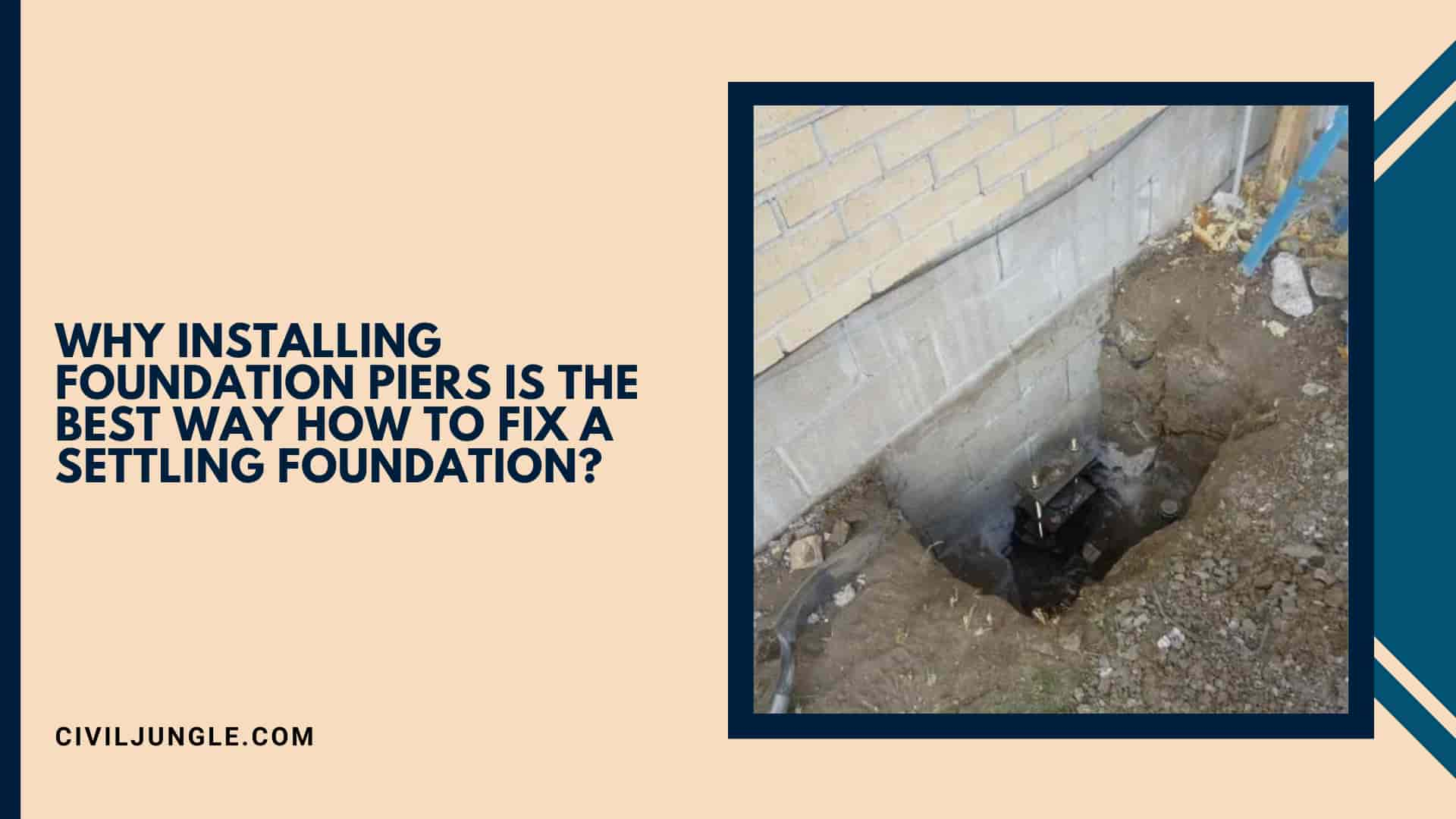How to Fix a Settling Foundation?
Important Point
Your foundation doesn’t settle at random, it’s well-planned. A weird noise in the middle of the night isn’t all that’s described. In fact, the movement of soil beneath your property is responsible for the settling process.
Take a look at this: Every time it rains in Orlando, FL, your soil expands and contracts, depending on the amount of water. Consequently, the soil structure beneath your property begins to move.
This movement might sometimes leave a void in its wake. Gravity pushes your foundation to sink a little further into the earth if water doesn’t quickly fill those vacuums.
If this happens too often, either owing to hydrostatic pressure or an unsteady foundation, your home may begin to sink rather than merely settle.
Regrettably, settling may not be the only issue you face. The longer you let your house sink without doing anything, the more likely you are to suffer foundation problems in the future.
Hydrostatic pressure, which causes settling in the first place, can also cause your foundation to fracture or leak. With that in mind, it’s critical to keep an eye on the health of your house so you can react appropriately.
Steps to Fix a Settling Foundation
Dampen Your Lawn:
You may believe that watering your lawn will increase the hydrostatic pressure in the region. This isn’t the case at all. If you don’t water your grass for an extended period of time, the dirt particles surrounding your house will begin to decrease.
When it rains, these tiny particles won’t be able to absorb as much water as they would normally. As a result, there will be more rainfall reaching your foundation.
Because of the unstable character of the soil, your foundation will be more prone to shift. In comparison, if you water your grass, your soil will stay healthy and be able to absorb precipitation at a suitable rate.
Keep a Watch on Your Landscape:
While trees and bushes around your house may seem lovely, they aren’t necessarily foundation-friendly. Invasive root systems are seen in many tree and hedge species.
These root systems will not physically dig into your foundation, but they will cause the soil surrounding your home to move more often. In most situations, bigger trees and hedges should be planted at least 20 feet away from your home’s perimeter.
Cleaning the Gutters:
The gutters and downspouts operate together just to keep the water out from the home’s perimeter. Rainwater might cascade down the sides of your house if you wouldn’t clean your gutters on a daily basis.
It’s much simpler for runoff to enter your foundation and start building up hydrostatic pressure, so maintain your gutters clear.
Why Installing Foundation Piers Is the Best Way How to Fix a Settling Foundation?
Because foundation piers are robust and can hold the load-bearing weight of a house, they are utilized to restore structures that are no longer level.
They’re quite heavy if you think about it. Typically, one side of a construction settles before the other. It could be wrong by 1”, 2”, or even more than 4”.
You may notice that the floors in one region of the house appear to be slanted, or that your brick exterior or sheetrock has little or huge cracks.
When a foundation settles, it can be repaired by hiring a company to elevate the foundation and level it out. To do so, the staff will have to excavate beneath the sinking parts of your home. They then lay piers (also known as pilings) right beneath the foundation.
The piers are stable because they are pushed far enough into the ground. Those piers will support the foundation of your home.
While there are many other types of pilings that can be utilized to fix a shifting foundation, pressed concrete piers and steel piers are the most common. You’ll want to learn more about each of these supports because they have various advantages.
What to Do If Setting Occurs?
Calling a reputable foundation repair company is a good idea. The majority of contractors offer free quotes and can tell you exactly what needs to be done to fix your foundation.
They can also estimate the number of piers you’ll need and the cost of any repairs. Before hiring a professional, make sure to ask if the work will be guaranteed and how long the repairs will take.
The workload of the building causes a vertical movement of the soil surface, which is known as foundation soil settlement. Settlement of the foundation structure during and after construction is regarded as natural and acceptable to a certain level.
Differential settlements, on the other hand, maybe a difficulty. Differential settlements are unequal foundation settlements caused by a variety of factors.
Causes of Differential Settlements
- In the horizontal direction, dirt has various lithological properties (different compressibility and soil compressibility beneath different parts of the foundation structure).
- The surface layers of the earth are drying off.
- The presence of large-rooted trees in close proximity.
- Leaks in the piping system, sewer drainage, and so forth.
- Excavations in the vicinity of the building.
- Structure foundations come in a variety of sizes and depths.
- Vibration.
In order to determine the source of differential settlements, geotechnical exploration, and investigation work is critical in foundation rehabilitation.
The best foundation structure repair approach is determined by a unique reason. Foundation remediation can be accomplished using a variety of technologies,
The Most Prevalent of Which Are:
1. Concrete underpinning is used to repair foundations.
2. Jet grouting for foundation repair.
3. Micro piles are used to repair foundations.
4. The use of expanding geopolymers for foundation remediation.
Because of the potential causes of differential settlements and their impact on overall structural stability, it is important to take them in mind while planning the foundation and landscaping in order to minimize their impact.
Settling Foundation Repair
Steel piers are a popular alternative for home foundation repair since they require less landscape disruption and create less clutter.
The kind and location of steel piers used for your home necessitate a great deal of technical knowledge, but it assures that they will survive for decades and offer the support that your home demands.
Helical piers are long beams with rounded supports running the length of them. Helical piers are a great choice for porches, columns, and structures with vinyl siding, as well as any lightweight structure that doesn’t need the strength of steel piers.
Concrete piers are more durable and cost-effective than steel piers, but they generate considerably more mess and landscape disruption since a foundation repair contractor must remove a significant amount of earth to construct the piers.
The installation of high-density foam foundation repair is simple and straightforward. The foam is poured into a checkerboard grid by a foundation repair contractor, who then waits for it to cure.
High-density foam foundation repair is a great option for lightweight constructions that only require little support.
House Settling Repair
- Install floor supports, also known as Titan Crawl Jacks.
- As needed, add more beams.
- Floor joists that are connected to each other
- Beams must be replaced.
- Beams of reinforcement
- Push piers for foundations with damaged external footings
- Custom structural repairs, such as floor removal and replacement
- Control the moisture in your crawl area after it has flooded.
- Control the moisture that comes from the damp ground and the moisture that comes from the outside dampness.
Huntsville Foundation Repair
Northern Alabama is known for its red clay soil, which is one of its most distinctive features. Huntsville’s soil, which is made up of worn limestone, is responsible for some of the greatest cotton in the state.
This type of soil is acceptable on its own, but the fact that it can be found in the third-wettest state in the United States causes problems for homeowners.
Clay soils are great at holding water, and when that wet soil sits right next to your foundation walls, structural damage is a foregone conclusion.
Because concrete is porous, unless your foundation is covered by a waterproof barrier, all of the moisture will damage the walls. Foundation deterioration begins as a minor issue, but it quickly grows into a major issue that affects your daily life at home.
Large wall cracks, jammed doors, sinking floors, and high energy bills all indicate foundation issues that must be addressed before the entire house collapses.
Contact a professional if you’re unsure about the state of your foundation’s deterioration.
American Standard Foundation Repair
Foundation damage on residential and commercial properties is assessed by American Standard Foundation Repair, LLC.
In addition, the organization creates documented repair plans and installs concrete and steel piering to restore concrete slabs and traditional foundations.
Floor leveling, structural wood replacement, pressure and injection grouting, chemical and compaction grouting, french drainage, sump pumps, gutters and gutter guards, preventative landscaping, and brick crack repairs are among the other services offered.
Cost to Repair Foundation Settling
Only a foundation repair contractor in your area can tell you how much it will cost to repair a foundation in your area.
As costs will vary depending on the extent of the damage, the type of repair chosen for your home, the accessibility of your home and foundation, and if any additional work is required to keep a home’s foundation secure.
A contractor might recommend that your property be graded or leveled, for example, to keep water away from the foundation and prevent it from heaving and bowing. Settling / Sinking costs between $1,300 and $1,500 per pier.
Frequently Asked Questions (FAQ)
What Causes a Foundation to Settle?
Foundation settlement can be caused by various factors such as soil movement due to changes in moisture content, poor soil compaction during construction, plumbing leaks, tree roots, and natural ground settling over time.
How Can I Tell If My Foundation Is Settling?
Signs of foundation settling include cracks in walls or floors, uneven or sloping floors, sticking doors or windows, gaps between walls and ceilings, and visible gaps or separations around the foundation.
What Are the Steps to Fix a Settling Foundation?
The steps to fix a settling foundation typically involve dampening the lawn to maintain soil moisture, monitoring landscaping to avoid tree root intrusion, and keeping gutters clean to prevent water buildup near the foundation. Professional repair methods may include installing foundation piers or using high-density foam.
What Are Foundation Piers, and How Do They Fix Settling Foundations?
Foundation piers are structural supports installed beneath a foundation to lift and stabilize it. They can be made of steel, concrete, or high-density foam, and they work by transferring the weight of the structure to deeper, more stable soil layers.
How Much Does It Cost to Repair a Settling Foundation?
The cost of repairing a settling foundation can vary widely depending on factors such as the extent of damage, the type of repair needed, and the accessibility of the foundation. On average, foundation repair costs can range from $1,300 to $1,500 per pier.
Like this post? Share it with your friends!
Suggested Read –




Leave a Reply